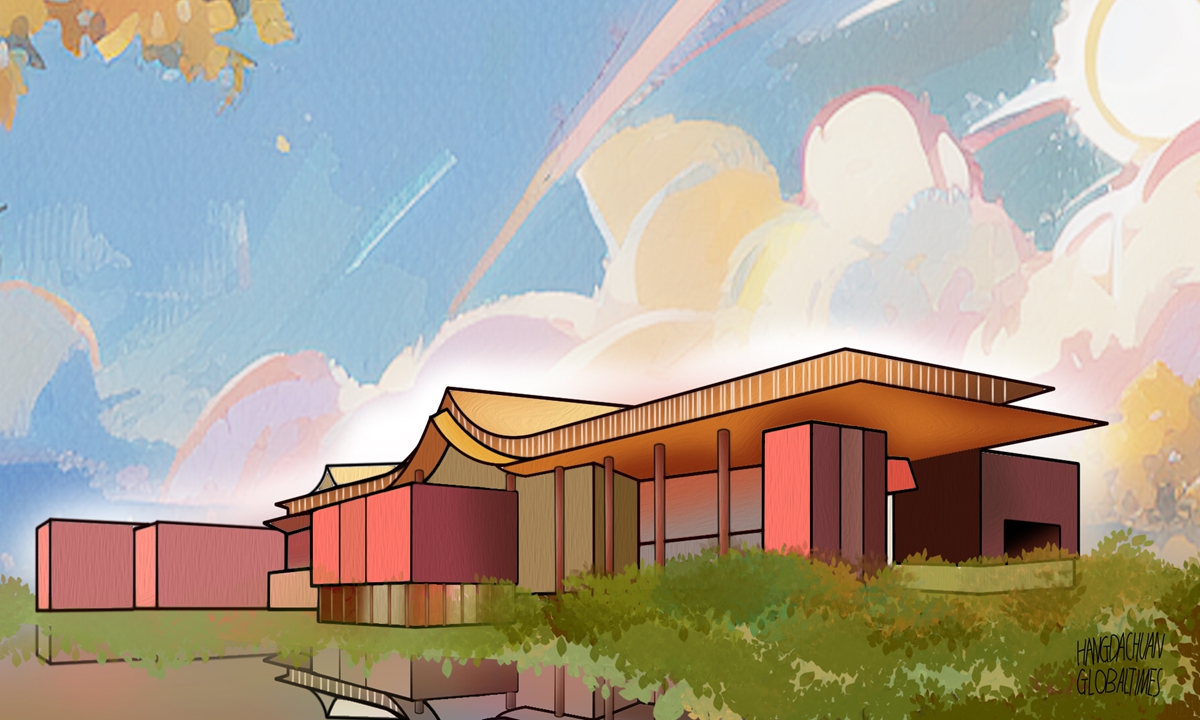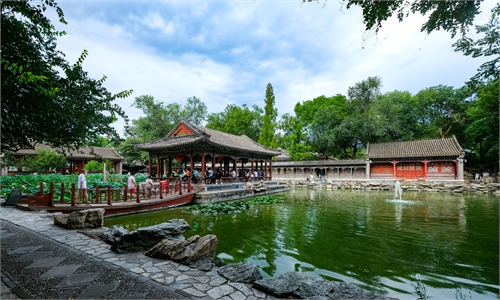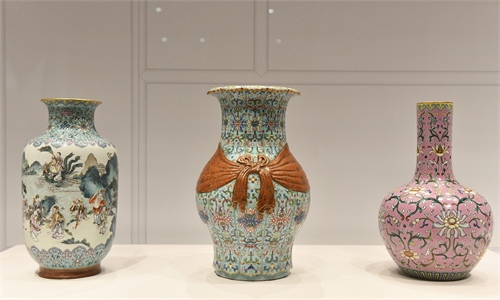ARTS / CULTURE & LEISURE
Inspiring new branch to show modern side of Palace Museum

Illustration: Hang Dachuan/Global Times
Anyone who has been to Beijing has most likely visited the Forbidden City, or Palace Museum, the imperial palace of China's last two dynasties from the 15th to the early 20th century. However, compared to the vast storage of countless cultural relics, its limited space and complicated exhibiting rules out of the wooden buildings' protection needs have determined that it can only display a small portion of the treasures.
A latest good news is that the Palace Museum will have a brand new branch in the northern part of Beijing by 2025, the centenary of the establishment of the Palace Museum. The construction of the new building had started in December 2022.
Completed in 1420 during China's Ming Dynasty (1368-1644), the Forbidden City was the place where emperors held grand ceremonies, conducted state affairs, and lived throughout the Ming and Qing (1644-1911) dynasties. After China's feudalistic regime was overthrown, the last emperor moved out of the palace, which was then turned into the museum in 1925.
Covering an area of more than 100 hectares, it is the largest ancient building complex in China and the biggest museum of ancient culture.
However, such a large area is still not sufficient to show its many cultural treasures, due to the Forbidden City's uniqueness.
According to reports, the museum houses 1.86 million cultural relics, but only fewer than 10,000 pieces are on display at any one time. So it is good to know that once the new site is completed, it will display 20,000 to 30,000 cultural relics every year.
Safety is a major concern. According to Du Haijiang, head of the project, right now 25 percent of the space at the Palace Museum is occupied by offices and warehouses. These increase the risk of harming the ancient buildings, visitors and the relics on display.
The Forbidden City is a cultural relic in and of itself.
As the largest and best-preserved wooden palace complex in the world, it is hard to hold exhibitions at the site while also protecting the architecture. So the new branch is essential to fully display the relics without worrying about possible damage to them. According to reports, the new branch will have 12 exhibition halls covering 35,000 square meters, all equipped with the latest technology.
Secondly, it will benefit the restoration of cultural relics. Restoration requires proper temperature and humidity to be maintained in work areas, but this is limited at the original site as rainy summers and dry and cold winters are the norm in Beijing. So the enlarged new area will accelerate the speed of restoration by providing modern facilities and instruments, and even allow visitors to watch the restoration process on the spot.
As the collection in the Palace Museum contains many first-class national historical relics, they put a very high demand on the conditions of the exhibition halls, in terms of being quake-proof and maintaining stable temperature and humidity, according to an expert from the Capital Cultural Development Research Center.
Previous visitors might also have experienced obscured views of portions of the palace due to dim lighting, but not any more. The lighting at the new venue will be improved so that visitors can have a much clearer view of the historical relics.
As one of the most ancient civilizations in the world, China deserves to have more museums that meet international standards. There are also some good examples in other countries. Egypt has finished the building of the world's largest archaeological museum - the Grand Egyptian Museum. The venue hosts more than 100,000 valuable historical relics.
Likewise, the new branch of China's Palace Museum will also provide more space and better conditions to display humanity's historical relics. Once it is completed, it will open up this treasure house even more to the world, and help promote cultural protection, exchanges as well as mutual learning between civilizations.


